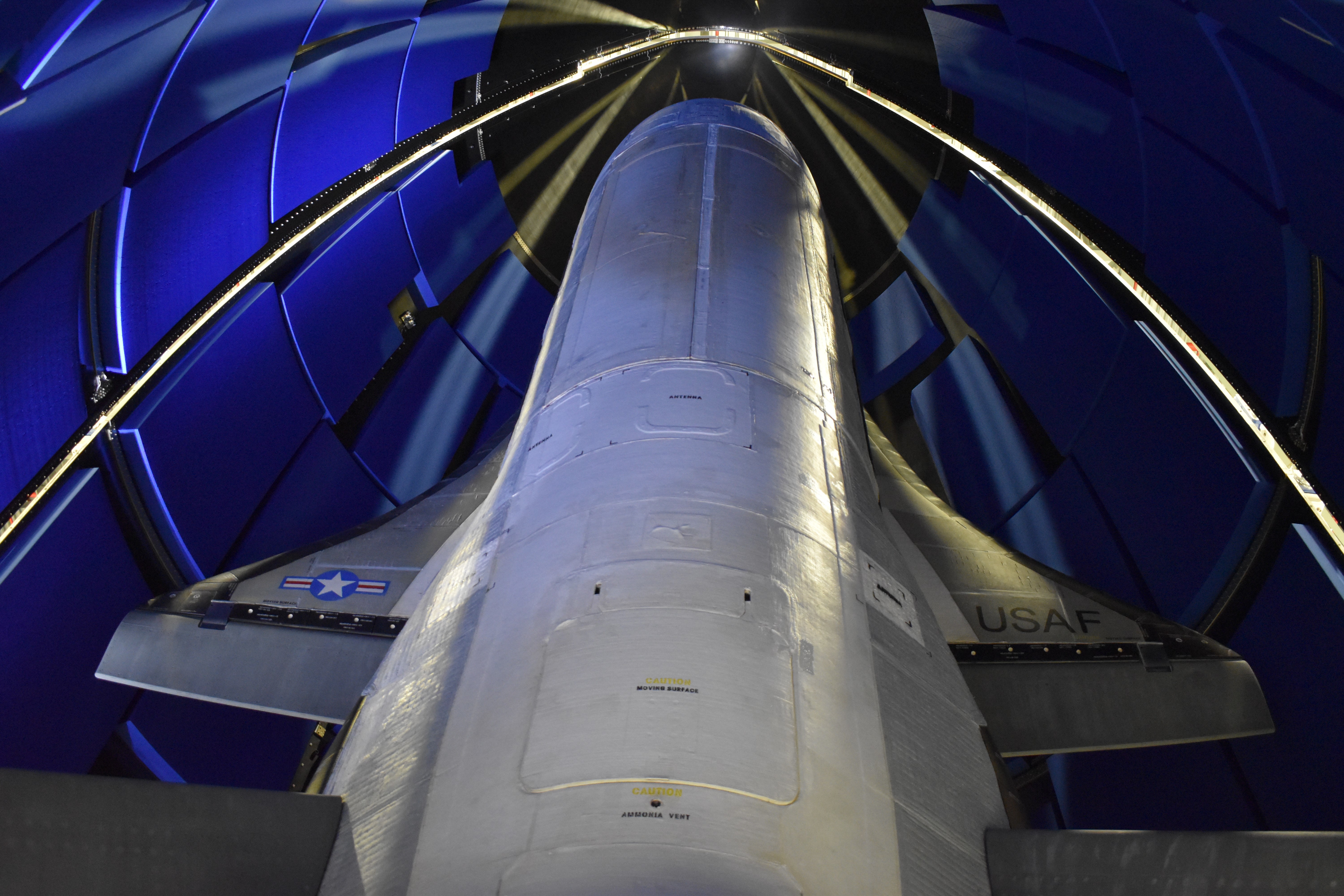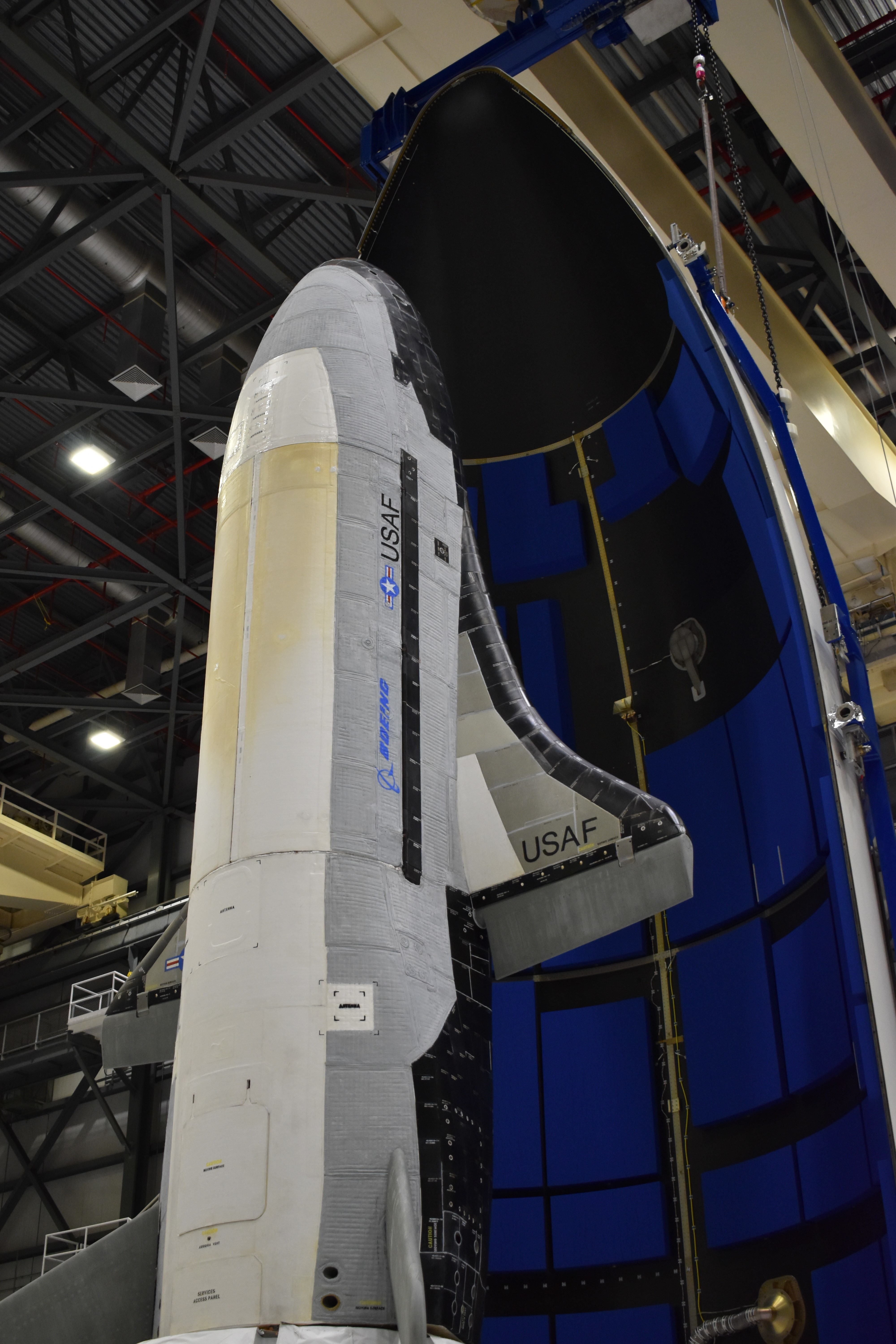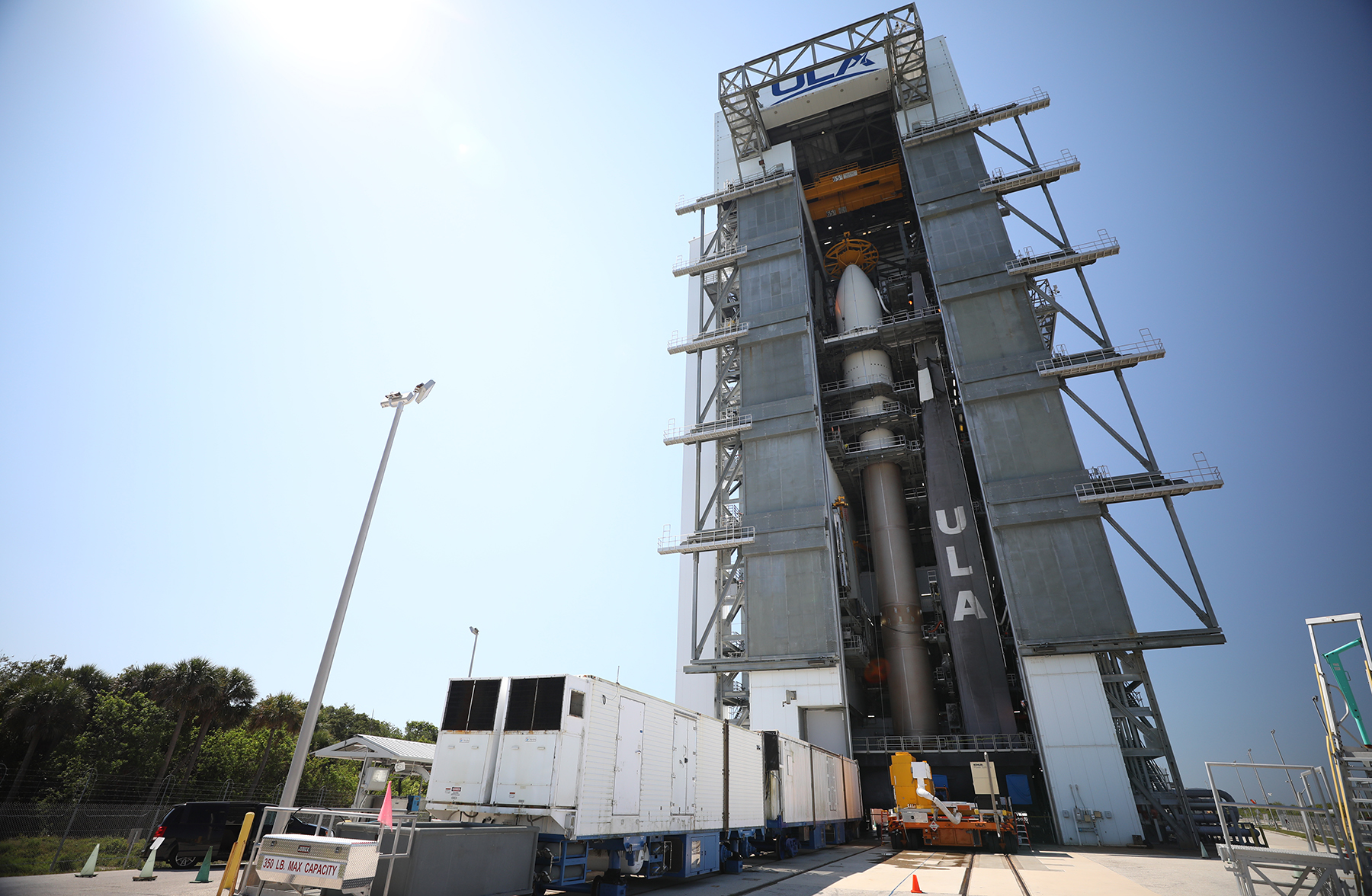The U.S. military's mysterious X-37B space plane is just 10 days away from launching on its next mission.
The X-37B is scheduled to lift off atop a United Launch Alliance Atlas V rocket from Florida's Cape Canaveral Air Force Station on May 16, kicking off the sixth mission for the robotic vehicle, Space Force and Air Force officials announced today (May 6).
"This important mission will host more experiments than any prior X-37B flight, including two NASA experiments," Secretary of the Air Force Barbara Barrett said today during a webinar hosted by the nonprofit Space Foundation.
Related: The X-37B space plane: 6 surprising facts

One of those NASA payloads will examine the effects of space radiation on seeds, and the other will assess the performance of various materials in the space environment, Barrett explained.
Another experiment, designed by the U.S. Naval Research Laboratory, "transforms solar power into radio-frequency microwave energy, then studies transmitting that energy to Earth," she said.

The upcoming mission, known as OTV-6 (short for "Orbital Test Vehicle-6") and Space Force-7, will also deploy FalconSat-8, a small satellite developed by the U.S. Air Force Academy that itself carries five separate experiments.
Get the Space.com Newsletter
Breaking space news, the latest updates on rocket launches, skywatching events and more!
To accommodate these and other payloads, the space plane has been outfitted with a service module for OTV-6 — a first for the X-37B program, Air Force officials said in a statement today.
The Air Force has two X-37B vehicles that we know of, both of which were built by Boeing. The vehicles look like NASA's old space shuttle orbiters, only much smaller. Each X-37B is 29 feet (8.8 meters) long by 9.5 feet (2.9 m) tall, with a wingspan of about 15 feet (4.6 m) and a payload bay the size of a pickup truck bed.
For comparison, each space shuttle was 122 feet (37 m) long with a wingspan of 78 feet (24 m).

The X-37B allows the U.S. military to test a variety of new tech in the space environment and return the gear to the ground for analysis. Many of the payloads that go up are classified, and military officials tend not to disclose many details of the vehicles' activities in orbit.
"The X-37B team continues to exemplify the kind of lean, agile and forward-leaning technology development we need as a nation in the space domain," Gen. Jay Raymond, the U.S. Space Force Chief of Space Operations, said in today's statement. (The newly formed Space Force, which is part of the Department of the Air Force, is responsible for X-37B launches, orbital operations and landings.)
"Each launch represents a significant milestone and advancement in terms of how we build, test and deploy space capabilities in a rapid and responsive manner," Raymond added.
It's unclear how long OTV-6 will last, but precedent suggests that the mission will be a sustained one. Each OTV flight has broken duration records for the program, and OTV-5, which landed in October 2019, circled Earth for 780 days.
The five previous X-37B missions racked up a combined 2,865 days in orbit, Barrett said. That's about 7 years and 10 months of off-Earth technology testing.
- US Air Force's secretive X-37B space plane (infographic)
- In photos: SpaceX launches X-37B space plane, lands Falcon 9 rocket
- Gallery: Declassified US spy satellite photos & designs
Mike Wall is the author of "Out There" (Grand Central Publishing, 2018; illustrated by Karl Tate), a book about the search for alien life. Follow him on Twitter @michaeldwall. Follow us on Twitter @Spacedotcom or Facebook.
OFFER: Save 45% on 'All About Space' 'How it Works' and 'All About History'!
For a limited time, you can take out a digital subscription to any of our best-selling science magazines for just $2.38 per month, or 45% off the standard price for the first three months.
Join our Space Forums to keep talking space on the latest missions, night sky and more! And if you have a news tip, correction or comment, let us know at: community@space.com.

Michael Wall is a Senior Space Writer with Space.com and joined the team in 2010. He primarily covers exoplanets, spaceflight and military space, but has been known to dabble in the space art beat. His book about the search for alien life, "Out There," was published on Nov. 13, 2018. Before becoming a science writer, Michael worked as a herpetologist and wildlife biologist. He has a Ph.D. in evolutionary biology from the University of Sydney, Australia, a bachelor's degree from the University of Arizona, and a graduate certificate in science writing from the University of California, Santa Cruz. To find out what his latest project is, you can follow Michael on Twitter.










